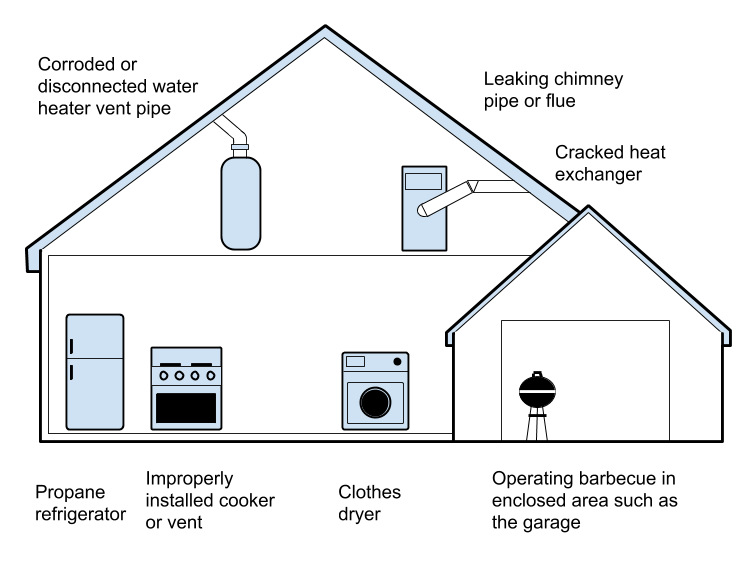The importance of Carbon Monoxide Gas Safety
Typical symptoms can develop with increased levels of exposure to carbon monoxide due to poor gas safety. It is important to have appliances checked regularly as well as installing correct and up to date detection systems. Gas safety is an important part of your household maintenance, and regular testing and servicing can prevent ill health or fatalities.
The Chase and Tyler Foundation
The Chase and Tyler Foundation raises awareness of the dangers of carbon monoxide after, in 2010, Chase and Tyler Robinson died of carbon monoxide poisoning from an un-serviced gas heater in their home. The foundation was set up to improve gas safety knowledge around Australia.
| Percent of CO in blood | Typical Symptoms |
|---|---|
| <10 | None |
| 10-20 | Slight headache |
| 21-30 |
|
| 31-40 |
|
| 41-50 |
|
| >51 |
|
| +60 |
|
Potential carbon monoxide sources in the home

- Potential carbon monoxide sources in the home
- Leaking chimney pipe or flue
- Corroded or disconnected water heater vent pipe
- Cracked heat exchanger
- Propane refrigerator
- Improperly installed cooker or vent
- Clothes dryer
- Operating barbecue in an enclosed area such as the garage
- Blocked chimney opening
- Gas or wood burning fireplace
- Car fumes from an attached garage




